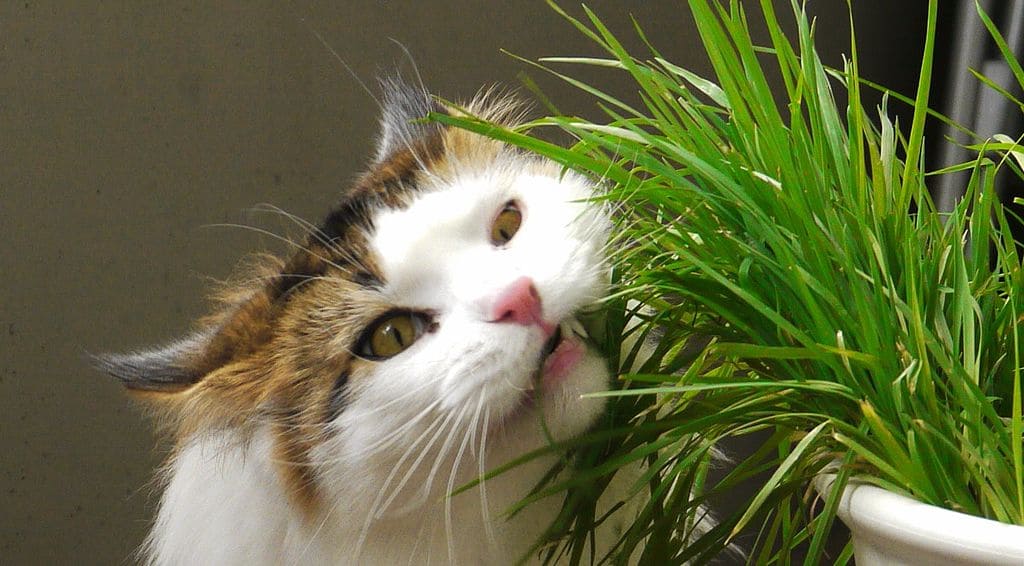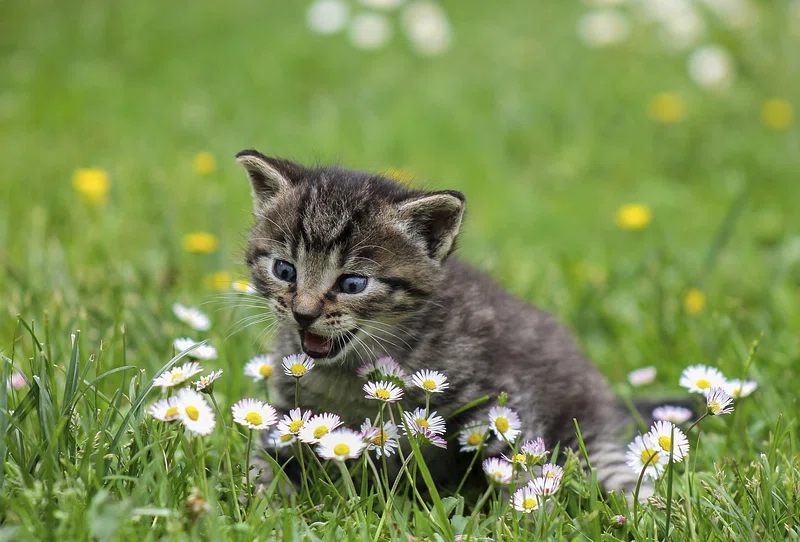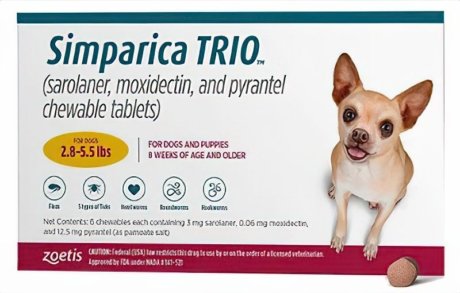What Does Catnip Do To Cats | The Science behind Catnip to Cats
If you’re a cat owner or simply fascinated by feline behavior, you’ve probably heard of catnip. Catnip is a herbaceous plant known scientifically as Nepeta cataria. It’s famous for its curious and often comical effects on our beloved feline friends. In this comprehensive article, we’ll delve deep into the world of catnip and answer the burning question: “What does catnip do to cats?”
Understanding Catnip: A Brief Introduction
Catnip (Nepeta cataria): The Gateway to Kitty Euphoria
Catnip, also known as “catmint” or “nip,” is a fragrant herb that belongs to the mint family. Its native range spans from Europe to Asia, and it has made its way into the homes of cat owners worldwide. The active compound in catnip responsible for its magical effects on cats is called “nepetalactone.”

The Catnip Experience: What Happens When Cats Encounter It?
When a cat encounters catnip, a fascinating sequence of events unfolds:
- Initial Sniff: The cat approaches the catnip and sniffs it. This initial whiff often results in curiosity and excitement.
- The Roll and Rub: After sniffing, the cat may roll around in the catnip or start rubbing its face and body against it. This behavior is a clear sign that the cat is thoroughly enjoying the experience.
- Playful Mode: Cats often become more playful and active when exposed to catnip. They might engage in playful antics, chase imaginary prey, or simply become more animated.
- Temporary Bliss: Catnip seems to induce a sense of euphoria in cats, which can last for about 10-15 minutes. During this time, cats are in their own world, seemingly in a state of pure bliss.
- The Aftermath: After the euphoric phase, cats typically lose interest in catnip for a while. The sensitivity to catnip varies among individual cats, and some may not react to it at all.

What Does Catnip Do To Cats
Catnip, scientifically known as Nepeta cataria, is a plant that has intriguing effects on many cats. These effects are primarily attributed to a compound called nepetalactone, which is found in the leaves and stems of the catnip plant. When cats come into contact with catnip, it can lead to various behaviors and responses. Here’s what catnip does to cats:
- Scent Sensation: Cats have a specialized scent organ called the vomeronasal gland, located in the roof of their mouth. This organ allows them to detect and process certain scents effectively. When cats encounter catnip, they often react by sniffing, licking, and rubbing their face and body against it.
- Behavioral Changes: The active compound nepetalactone in catnip can mimic feline sex hormones. As a result, cats exposed to catnip may display behaviors similar to a female cat in heat. These behaviors can include signs of affection, relaxation, happiness, playfulness, or even occasional aggression.
- Anxiety Reduction: For cats that have a positive response to catnip, it can act as a natural stress reliever. It may help reduce anxiety and, in some cases, provide pain relief.
- Variability in Response: It’s important to note that not all cats react to catnip. Approximately 60% of cats are sensitive to the compound and will exhibit behavioral changes when exposed to catnip. For cats that do not respond to catnip, an alternative called silver vine can be tried.
- Genetic Influence: Research suggests that a cat’s response to catnip is influenced by genetics. It appears to be a dominant trait, meaning it’s determined by specific genetic factors.
Duration of Catnip Effects:
The effects of catnip can vary in duration among individual cats. Typically, the behaviors associated with catnip exposure last for approximately 10 minutes and then gradually subside. After this initial period, it may take around 30 minutes without exposure to catnip for the cat to become susceptible to its effects again. It’s worth noting that catnip can lose potency over time, so storing it in an airtight container can help maintain its freshness.
Catnip and Kittens:
Catnip is not harmful to kittens, but most cats won’t respond to it until they are 6 months to 1 year old. Some cats may exhibit increased sensitivity to catnip as they age.
Ingesting Catnip:
Cats can safely ingest small amounts of catnip, and it may even benefit their digestive tract. In fact, the catnip plant has been used in human medicine for its antidiarrheal properties. However, it’s important to prevent cats from consuming large quantities of catnip, as this can lead to digestive upset.
Potential for Catnip Overdose:
Giving a cat too much catnip can lead to health problems, including vomiting, diarrhea, dizziness, or unsteady movement. It’s advisable to use catnip in moderation and consult with a veterinarian to determine the appropriate amount for your cat. Fresh catnip is more potent than dried catnip, so less is needed. Additionally, highly concentrated catnip oils should be avoided due to their potency.

How to Use Catnip:
Catnip is available in various forms, including:
- Fresh Catnip: You can grow your own catnip plant for your cat to enjoy.
- Dried Catnip: Dried catnip can be sprinkled on surfaces or used in cat toys.
- Catnip Sprays or Bubbles: These are suitable options for cats that may have a sensitive stomach when ingesting catnip.
- Cat Toys: Many cat toys are stuffed with dried catnip or can be rolled in catnip to engage your cat in play.
The Science Behind Catnip’s Effect on Cats
Nepetalactone: The Key Player
Nepetalactone, found in the leaves, stems, and seeds of catnip, is responsible for the intriguing reactions observed in cats. When cats inhale nepetalactone, it binds to receptors in the nasal tissue and stimulates sensory neurons that affect various regions of the brain. This stimulation results in the euphoric and playful behavior we associate with catnip.
Not All Cats Are Equal: Sensitivity to Catnip
It’s important to note that not all cats respond to catnip. Approximately 50-70% of cats exhibit a strong reaction to catnip, while others remain completely indifferent. This difference in sensitivity is believed to be genetically determined and can vary among individual cats.
The Benefits of Catnip
Beyond providing entertainment for both cats and their owners, catnip offers some practical benefits:

1. Stress Relief
Catnip can act as a stress reliever for cats. In stressful situations, such as vet visits or moving to a new home, catnip can help alleviate anxiety.
2. Promoting Exercise
The playful behavior induced by catnip encourages physical activity in cats, promoting exercise and keeping them fit.
3. Training Aid
Cat owners can use catnip as a training tool. For example, it can be sprinkled on a scratching post to encourage cats to use it or sprinkled in their carrier to make travel less stressful.
Caution: Catnip in Moderation

While catnip is generally safe for cats, it’s important to use it in moderation. Excessive exposure to catnip can lead to habituation, causing the cat to become less responsive to it over time. To avoid this, limit catnip use to occasional treats.
Catnip Products: Toys, Sprays, and More
Catnip is available in various forms for your feline friend’s enjoyment. Some popular options include:
1. Catnip Toys
Catnip-infused toys are a great way to keep your cat entertained. They can pounce, bat, and roll around with these toys for hours of fun.
2. Catnip Sprays
Catnip sprays can be applied to scratching posts, bedding, or toys to entice your cat to interact with them.
3. Catnip-Infused Treats
Catnip-flavored treats are a delicious way to reward your kitty while providing them with a taste of the catnip experience.
Growing Your Own Catnip
For the cat enthusiast who enjoys gardening, growing your own catnip can be a rewarding experience. Here are some tips for cultivating this magical herb:

1. Choose the Right Location
Catnip thrives in full sunlight, so select a spot in your garden that receives ample sunshine throughout the day.
2. Soil Preparation
Ensure well-drained soil for your catnip plants. Catnip prefers slightly alkaline soil with good drainage.
3. Planting Catnip
You can start catnip from seeds or purchase young plants from a nursery. Plant them about 18 inches apart to give them room to grow.
4. Watering and Care
Catnip requires regular watering, especially during dry spells. Be sure to keep the soil consistently moist but not waterlogged.
5. Harvesting Catnip
You can harvest catnip leaves and flowers once the plant has reached maturity. Dry them and store them in a cool, dry place for later use.
Catnip Around the World
Catnip isn’t just popular among domesticated cats. It has a rich history of use in various cultures around the world:
1. Medicinal Uses
In traditional medicine, catnip has been used to treat ailments in humans, including insomnia, anxiety, and digestive issues. It was also used as a mild sedative.
2. Culinary Delight
In some cultures, catnip leaves were used as a culinary herb, adding flavor to dishes and teas.
3. Insect Repellent
Catnip has been found to be an effective natural insect repellent. Some cultures used it to ward off mosquitoes and other pests.
Catnip and Your Cat’s Health
While catnip is generally safe for most cats, it’s essential to be aware of potential risks and considerations:

1. Allergies
Some cats may be allergic to catnip, which can lead to skin irritation or digestive issues. Always monitor your cat’s reaction when introducing catnip.
2. Overindulgence
As mentioned earlier, too much catnip can lead to habituation. Use it in moderation to maintain its effectiveness.
3. Kittens and Elderly Cats
Kittens and very old cats may not respond to catnip in the same way as adult cats. Their sensitivity can vary, so be cautious when introducing catnip to these age groups.
Catnip in Popular Culture
Catnip has made its way into popular culture, often depicted as a source of amusement for cats. Here are a few notable mentions:
1. Cartoons and Comics
In many cartoons and comics featuring cats, catnip is portrayed as a catalyst for humorous and exaggerated behavior.
2. Cat Videos
The internet is filled with viral cat videos featuring cats reacting to catnip. These videos often garner millions of views and serve as a source of entertainment for cat lovers worldwide.
The Final Word:
In conclusion, catnip is a fascinating herb that can bring joy and entertainment to both cats and their owners. While its effects may vary from one feline friend to another, the allure of catnip remains a delightful mystery in the world of pet care. Remember, when using catnip, do so in moderation, and always prioritize your cat’s well-being.
So, the next time you see your cat rolling blissfully in a pile of catnip, you’ll have a deeper understanding of the magic happening right before your eyes. Catnip truly is a remarkable and enchanting herb that enhances the lives of our furry companions.
-
What is catnip, and why do cats react to it?
Catnip is a herbaceous plant known scientifically as Nepeta cataria. It contains a compound called nepetalactone, which, when inhaled by cats, binds to receptors in their nasal tissue and stimulates sensory neurons in their brain. This stimulation leads to the playful and sometimes euphoric behavior we commonly observe in cats.
-
Are all cats affected by catnip?
No, not all cats are affected by catnip. Approximately 50-70% of cats are sensitive to catnip, while the rest show no significant reaction. This variation in sensitivity appears to be genetically determined.
-
Is catnip safe for cats?
Yes, catnip is generally safe for cats when used in moderation. It’s non-addictive and not harmful. However, excessive use can lead to habituation, where cats become less responsive to it over time. Always use catnip in moderation to maintain its effectiveness.
-
How can I use catnip to entertain my cat?
Catnip can be used in various forms. You can offer catnip-infused toys, sprinkle it on scratching posts or bedding, or provide catnip-flavored treats. This variety allows your cat to enjoy catnip in different ways.
-
Can kittens and elderly cats also enjoy catnip?
Kittens and very old cats may not respond to catnip in the same way as adult cats. Sensitivity to catnip can vary, so it’s essential to observe your cat’s reaction when introducing it to them. Some kittens may not react until they’re a bit older.
-
Can catnip help reduce my cat’s stress and anxiety?
Yes, catnip can act as a stress reliever for cats. It can be particularly helpful in stressful situations, such as vet visits or when introducing a new pet to the household. However, not all cats respond to catnip in this way, so it may not work for every cat.
-
Can I grow catnip in my garden?
Yes, catnip is relatively easy to grow in your garden. It prefers full sunlight and well-drained, slightly alkaline soil. You can start catnip from seeds or purchase young plants from a nursery. It’s a great addition to your garden if you’re a cat owner.
-
Are there any alternatives to catnip for entertaining cats?
Yes, there are alternatives to catnip for entertaining cats. Some cats enjoy silvervine, valerian root, or honeysuckle as alternatives to catnip. These can be found in various cat toys and products.
-
How often can I give my cat catnip?
You can give your cat catnip as often as you’d like, but it’s best to use it in moderation. Too much catnip can lead to habituation, where the cat becomes less responsive to it over time. Using it occasionally or as an occasional treat is a good practice.
-
Can catnip be harmful if ingested by cats?
Catnip is generally safe, even when ingested in small amounts. However, if your cat consumes large quantities of catnip, it may cause mild digestive upset, such as vomiting or diarrhea. To prevent this, use catnip in appropriate moderation.
-
Can my cat overdose on catnip?
No, it’s highly unlikely for a cat to overdose on catnip. Catnip is non-toxic to cats. However, giving your cat excessive amounts of catnip can lead to desensitization over time, reducing its effectiveness.
-
How long does the effect of catnip last on a cat?
The effects of catnip typically last for about 10-15 minutes. After this period, most cats lose interest in catnip for a while. Cats can become less responsive to catnip if exposed too frequently.
-
Can I use catnip to train my cat?
Yes, catnip can be a useful training aid. You can sprinkle it on objects like scratching posts or use it as a reward during training sessions to encourage positive behavior.
-
Can catnip be used for shy or timid cats to boost their confidence?
Catnip can help some shy or timid cats become more playful and engaged, which can boost their confidence. However, it may not work the same way for all cats, as individual reactions to catnip vary.
-
Are there any side effects of using catnip for cats?
Generally, there are no adverse side effects of using catnip for cats. However, as with any substance, individual cats may react differently. Some may become overly excited, while others may become more relaxed. Always monitor your cat’s response.
-
Can I use catnip for multiple cats in a household?
Yes, you can use catnip for multiple cats in a household. However, be mindful that not all cats may react to catnip, and their responses can differ. Ensure that each cat has the opportunity to enjoy catnip in a safe and controlled environment.
-
Can catnip be used to introduce two cats or ease tension between them?
Catnip may help in some cases by diverting their attention and reducing tension. However, it’s not a guaranteed solution for all cat conflicts. It’s essential to address underlying issues and consult with a veterinarian or behaviorist if needed.
-
Can outdoor cats find wild catnip plants?
It’s possible for outdoor cats to encounter wild catnip plants, as catnip can grow in various regions. Some cats may be naturally attracted to these plants in the wild.
-
Can I use catnip for older cats to keep them active?
Catnip can be a fun way to encourage activity in older cats. While they may not react as energetically as younger cats, it can still stimulate their senses and provide mental and physical stimulation.
-
Can cats build a tolerance to catnip?
Yes, cats can build a tolerance to catnip with frequent exposure. To prevent habituation, it’s advisable to use catnip in moderation and provide it as an occasional treat or source of entertainment.
Recommended:
Kennel Cough Symptoms | Recognizing and Managing Canine Respiratory Infections
What Do Fleas Look Like? | A Comprehensive Guide to Flea Identification





























